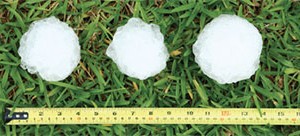Karen Clark & Co. (KCC) released a new U.S. Earthquake Reference Model as part of its RiskInsight open loss modeling platform. The model is based on the latest 2014 U.S. Geological Survey (USGS) report, which incorporates updated seismicity assumptions.
KCC said in a statement that the USGS report showed how recent events—such as the 2011 magnitude 9 Tohoku earthquake and the 2012 8.6 Sumatra earthquake—have highlighted the limitations of focusing on known seismic sources. Many faults are still unmapped, according to the report, leaving scientists surprised by the location, magnitude and resulting damage of many earthquakes. KCC said the latest USGS report also includes more “multi-fault rupture scenarios.”
The new model includes thousands of vulnerability curves representing different occupancy and construction types, height and year-built bands, and building code assumptions that vary by region. KCC said the RiskInsight Earthquake Reference Model can be used to estimate losses on portfolios of properties along with individual policies and accounts.
“Our clients can see the new scenarios superimposed on their exposures to identify where they may be overexposed to future large-magnitude events and where they have capacity to write more business,” said KCC Co-founder and CEO Karen Clark, in prepared remarks. “Along with obtaining the traditional EP curve metrics, insurers can estimate their losses from different return-period events as provided by the USGS.”
Some of the updates include:
- There is an increased probability of magnitude 8 and larger events in California, and a decreased probability of moderate events—those magnitude 6.7 and above.
- There is now a higher frequency of earthquakes in the southern section of the Cascadia Seismic Zone in the Pacific Northwest.
- In the New Madrid Seismic Zone, the combined effects of seismicity and ground motion changes have led to decreased hazard at longer return periods and increased hazard at shorter return periods.
Source: Karen Clark & Co.




















 Roof Repair and Replacement Costs Up Nearly 30% Since 2022: Verisk
Roof Repair and Replacement Costs Up Nearly 30% Since 2022: Verisk  Wildfire Losses Increasing But Still Small Compared to Hurricanes: KCC
Wildfire Losses Increasing But Still Small Compared to Hurricanes: KCC  Is State Farm General Too Big to Fail? Calif. Rate Hearing Concludes
Is State Farm General Too Big to Fail? Calif. Rate Hearing Concludes  Despite Decline in Cyber Breaches, Middle Market Firms Must Remain Vigilant: Survey
Despite Decline in Cyber Breaches, Middle Market Firms Must Remain Vigilant: Survey 










